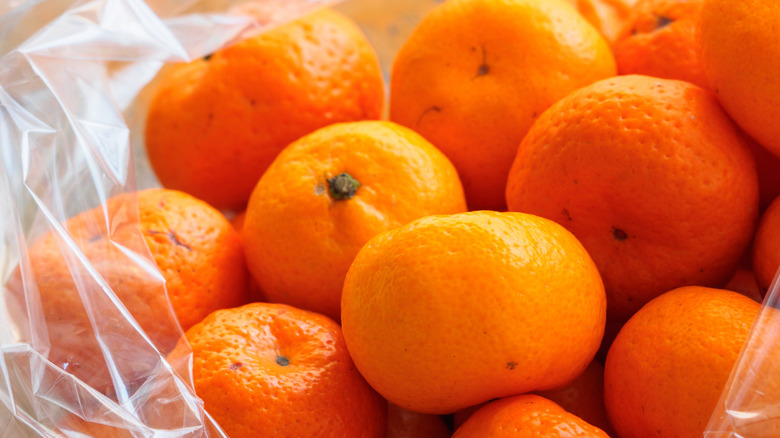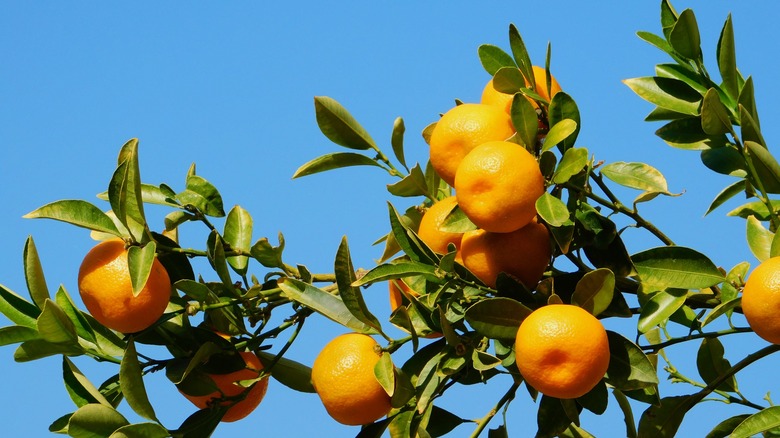Kishu Oranges Are Hard-To-Find Fruits That Only Grow In 2 States
Maybe you have a favorite type of orange: a plump, juicy navel, sassy clementine, regal Valencia, or a sweet and tangy cross-bred Cara Cara. You might want to put those passions aside from late January through February. That's when the teeny-tiny, elusive kishu oranges sashay onto the citrus scene. Don't blink, or you'll miss them, especially if you live far from the only two states known to cultivate them: Florida and California. However, thanks to modern-day shipping and online ordering, there's a fair chance you can still taste these little beauties as they reach maturity in select specialty orchards. Don't dawdle, as they've been known to sell out within two weeks.
Here's why you should go out of your way to experience a kishu mandarin orange, known by cutesy monikers such as kishu kisses, little wonders, cherry oranges, and tiny tangerines; you can also find them under the interchangeable name of kishu tangerines. First, they're extraordinarily sweet, with a light, tingly, tangy touch, and can be as small as a walnut or up to about 2 inches. Second, a kishu is thin-skinned, fragrant, juicy, and easy to peel, which makes them perfect for one-bite delights and easy snacking for kids.
Finally, like other orange varieties, they pack valuable nutrients, including vitamins C and A, calcium, potassium, and antioxidants. As a bonus, because they're so sweet — ranging up to 14 on the Brix sugar measurement scale – you'll likely consume them frequently for concentrated doses of sugary goodness.
How to grow your own kishu oranges
If all that sounds excruciatingly delicious but sadly out of reach, there's another option for accessibility: Grow them at home in your garden, greenhouse, or sunroom. Plenty of garden nurseries sell the petite kishu orange trees, which only need a small amount of space to grow and thrive. The trees generally ship at heights ranging from 18 to 36 inches but can grow up to 14 feet tall when fully mature. They're not "cold hardy" in gardening terms, so it's prudent to cultivate the perfect climate-controlled space for these well-worth-it, vibrant fruits.
Once you have a ready, in-season supply, you can creatively incorporate kishu oranges into salads, charcuterie boards, vinaigrette dressings, or sauces for seafood and poultry. They're also tasty when served over ice cream and yogurt. Or, try candying the little segments with sugar, cinnamon, and vanilla. They're also snackable when dried with spicy additions such as ground ginger, chili powder, nutmeg, or cloves.
Though kishu oranges harbor plenty of juice within their tender skins, it would be tricky to use them to produce a pitcher of even a single glass of orange juice; it would take a lot of those little lovelies. Besides, it's a delight to pop the sweet, tangy, refreshing fruit straight into your mouth. Larger-sized oranges – including ones in the kishu's expanded Rutaceae family of mandarins — are better fruits for juicing.

